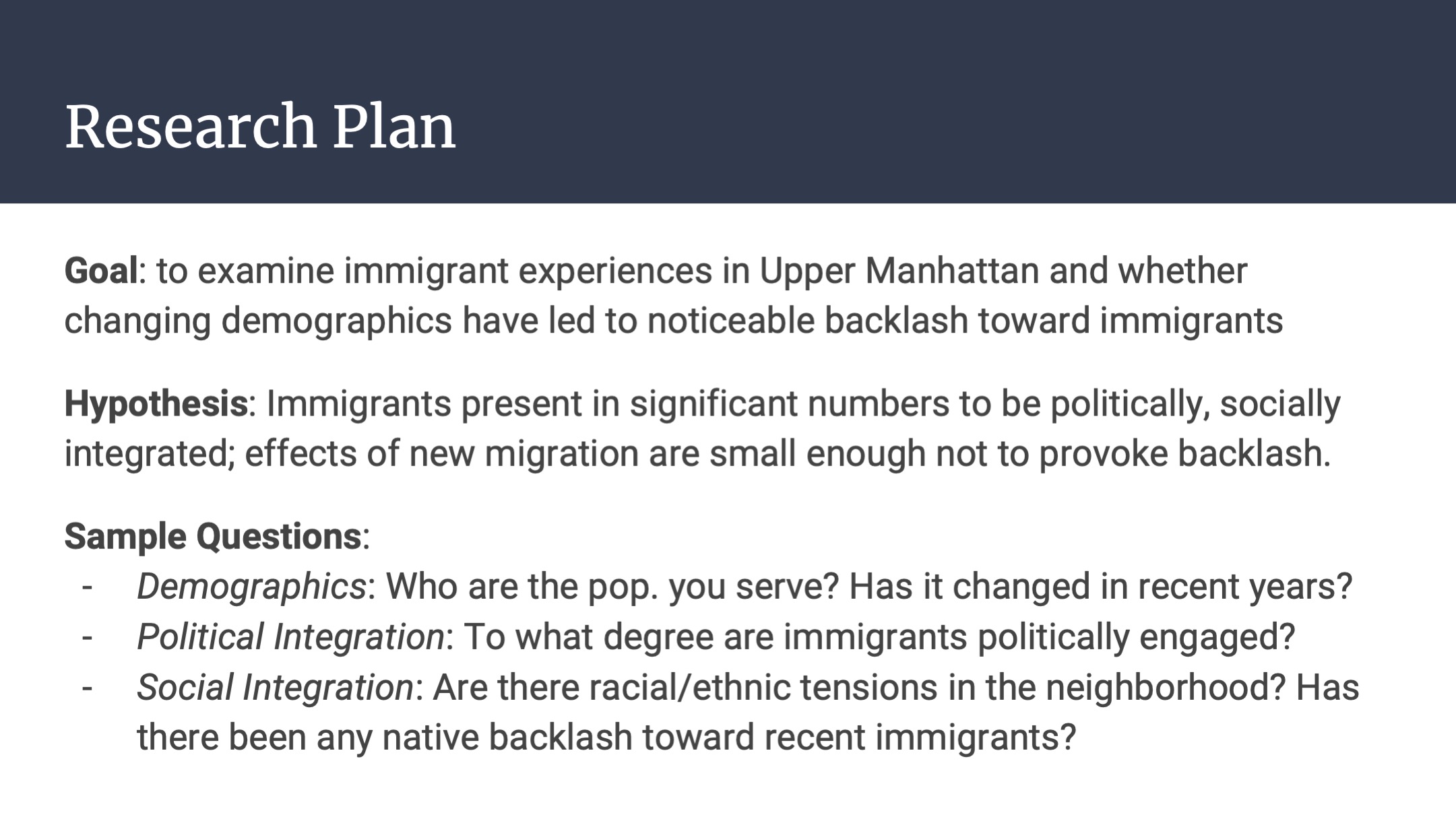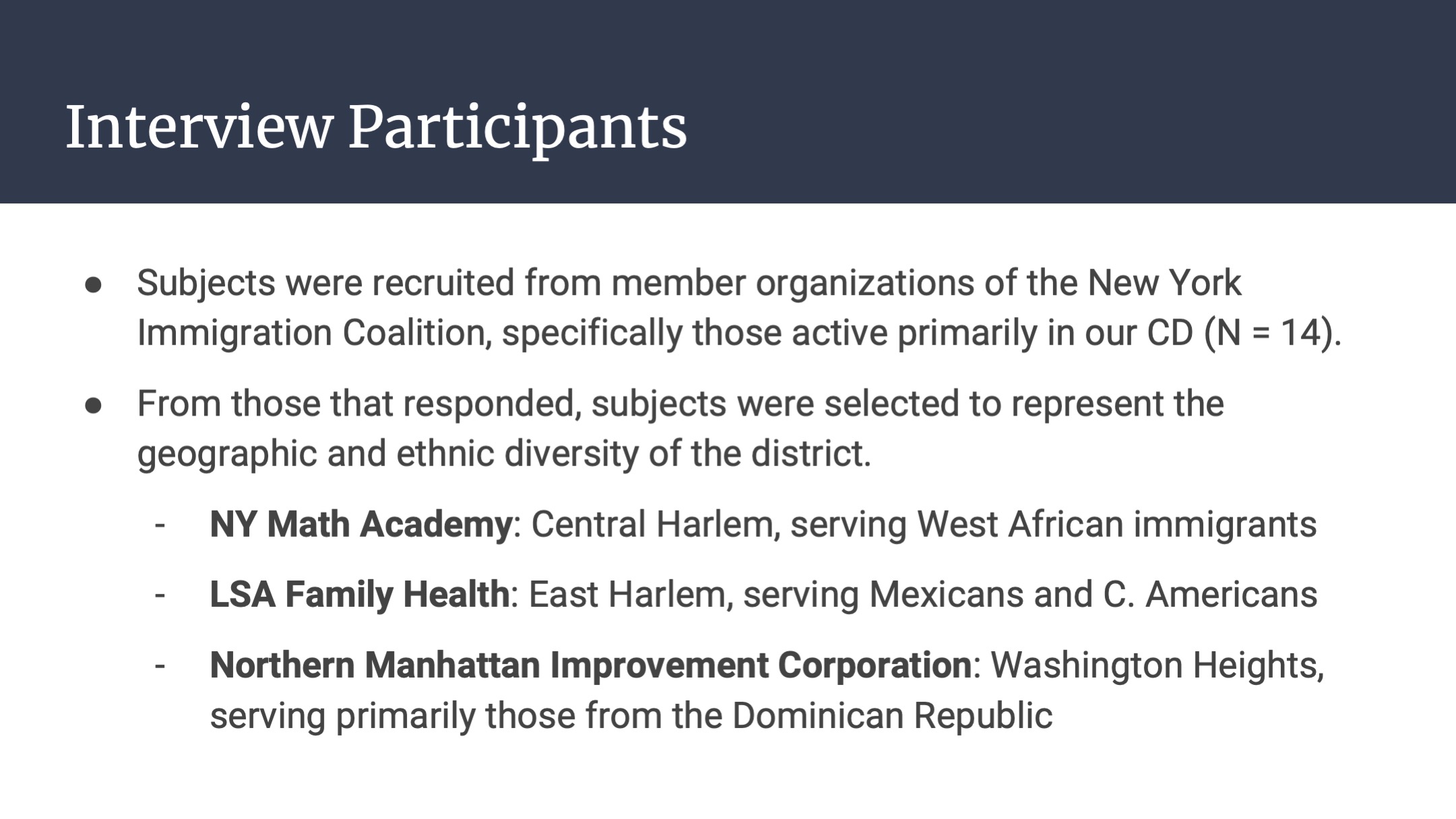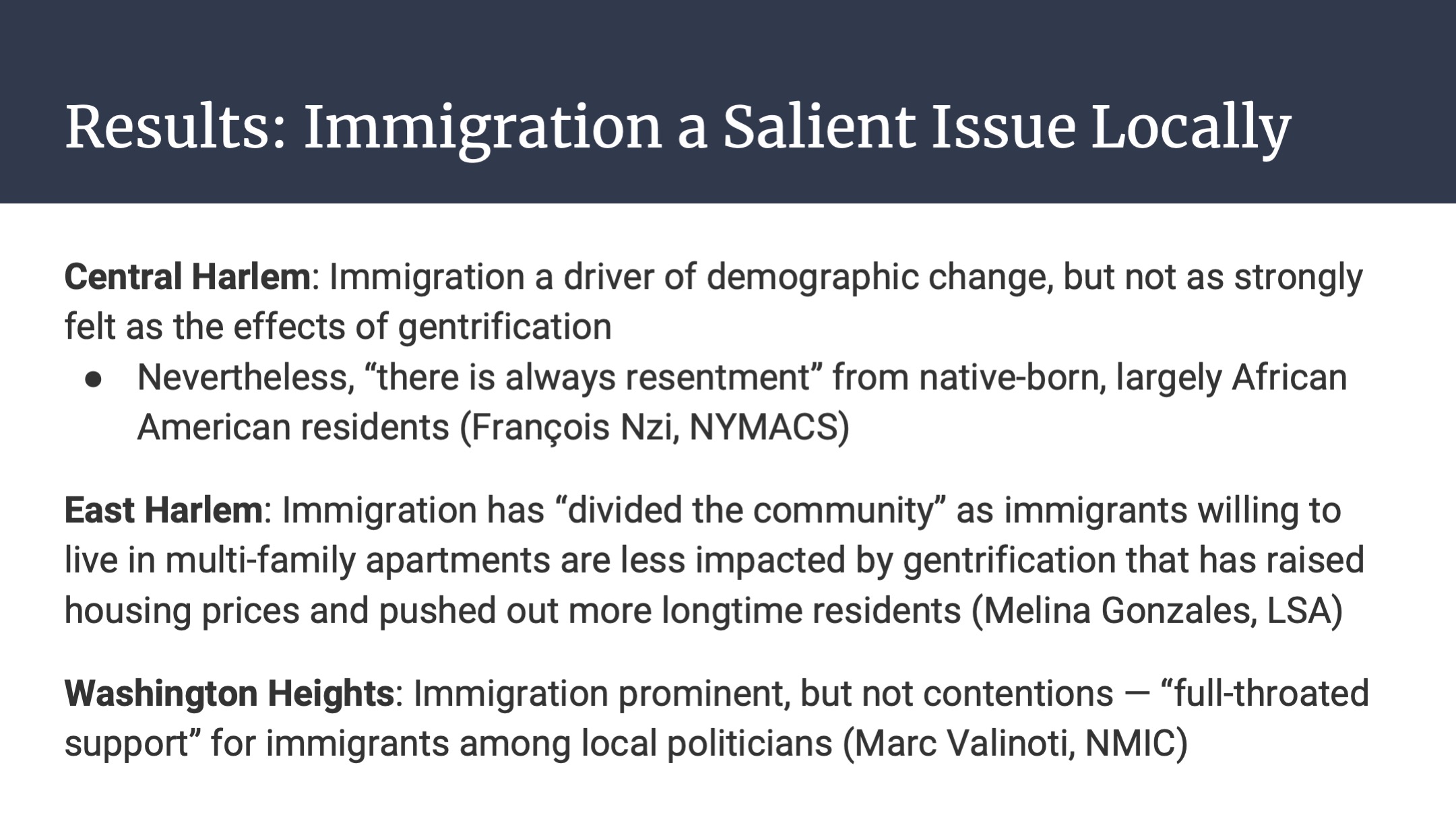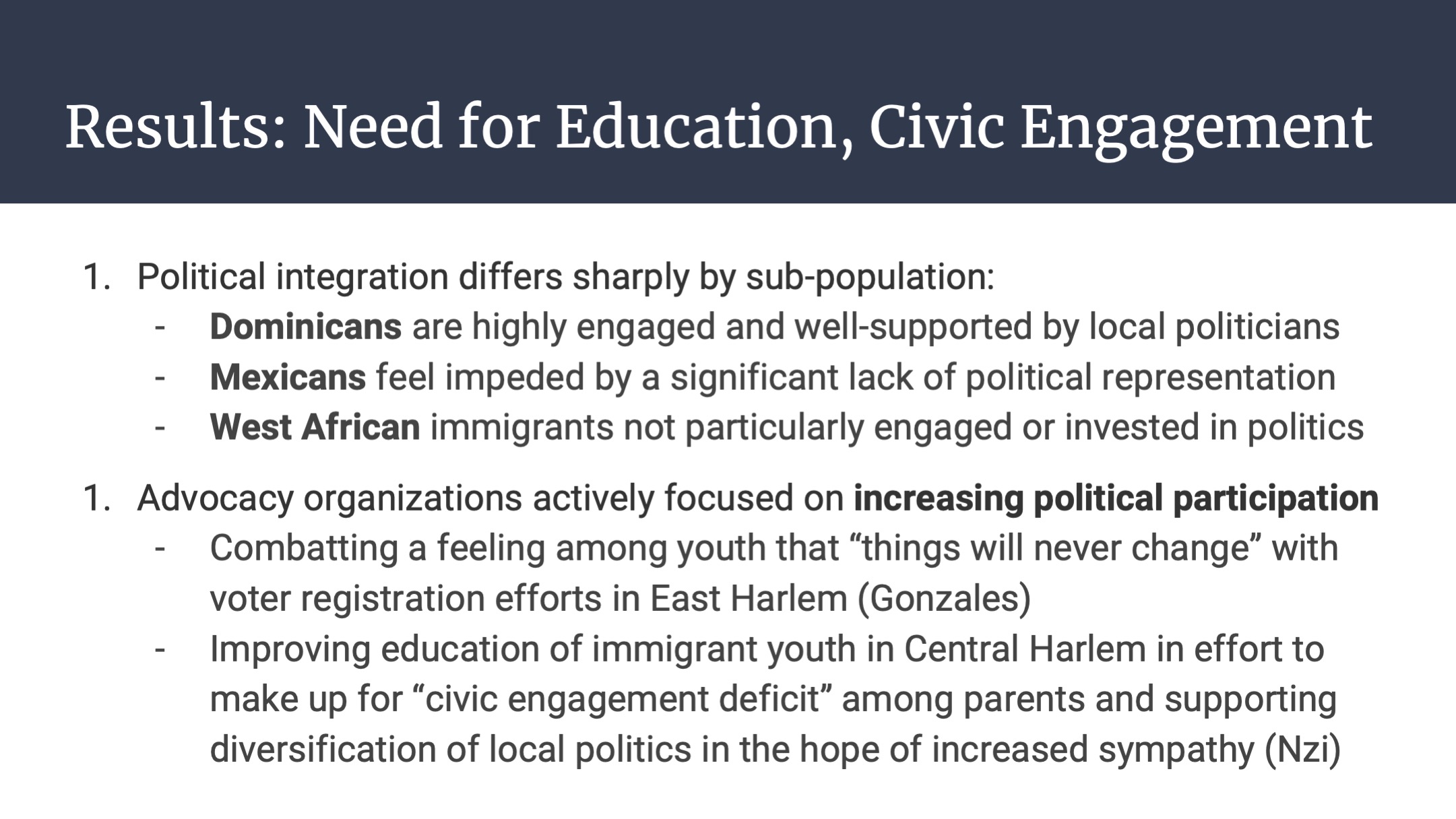

Slide 1: Research Design
This research sets out to examine the effects of demographic change in New York’s Thirteenth Congressional District, with specific attention to how these changes have affected immigrant experiences of social and political integration, and whether they have been met with resistance from the district’s native population. To that end, we ask our subjects about the population makeup of their neighborhood and how it has changed in recent years, and for interviewees to identify markers of political and social integration among the local immigrant population. We hypothesize that (1) immigrants are present in large enough numbers to be well integrated, and (2) that the rate of change is not significant enough to provoke backlash.

Slide 2: Interview Participants
We reached out to fourteen organizations, selected from a list of immigrant advocacy stakeholders that comprise the New York Immigration Coalition. Of the five that responded, we interviewed three organizations chosen to represent the geographic and ethnic diversity of our district. Despite it being the smallest in the country, we found that the different neighborhoods and sub-populations within the district have sharply different experiences and difficulties, as we will report in the following slides.

Slide 3: Results (Part 1)
This slide challenges the predictions of our second hypothesis, on the link between demographic change and native backlash. Despite the fact that district-wide no racial group underwent strong relative changes in ethnic populations, this did not account for other, more neighborhood-level effects, such as gentrification. In all three interviews, we heard about the challenges that gentrification brings to immigrants, but in none were the feelings as strong as those in East Harlem. There, immigrants are resented by native residents as they are perceived to be more resilient to the effects of rising housing prices due to their willingness to share small apartments among multiple families.
To a lesser extent, this sentiment is present in Central Harlem as well, where we were told about resentment toward newcomers from native residents who have been increasingly pushed out of their longtime homes. Although this resentment has not manifested itself physically in any of the neighborhoods studied, it is important to recognize that backlash is produced not merely by demographics alone, but rather in the context of underlying socioeconomic trends at the neighborhood level.

Slide 4: Results (Part 2)
This slide addresses our first hypothesis, with regards to political integration. Although our research neither confirms nor disproves the prediction, it adds to it a measure of complexity. Political representation is something that weighs heavily on the minds of all those who we interviewed. But despite immigrants making up large percentages of the population in all three areas, some groups are systematically more integrated than others.
Dominican immigrants are well incorporated into the political system and enjoy “full-throated support” from local politicians (including the co-ethnic Rep. Espaillat) according to Marc Valinoti, managing immigration attorney at the Northern Manhattan Immigration Corporation. Mexicans and Central Americans, meanwhile, suffer the abuses and “broken promises” of a lack of representation according to Melina Gonzalez, immigration outreach organizer at LSA Family Health Service. Both she and François Nzi, founder of the New York Math Academy tutoring program for immigrant youth, believe that the only way things will change is with increased engagement with the political system. His hope is that educating youth will “bring the parents along” as well.
For these reasons of inter-neighborhood heterogeneity, we are hesitant to speak of the effect of demographics on political integration, as different groups seem to enter into the system at different rates. Nevertheless, we find that a key goal for immigrant advocacy organizations remains increasing voter registration and turnout in the hope of achieving entry into the political sphere, giving modest support to our hypothesis about the positive effects of increased immigrant numbers on political integration.